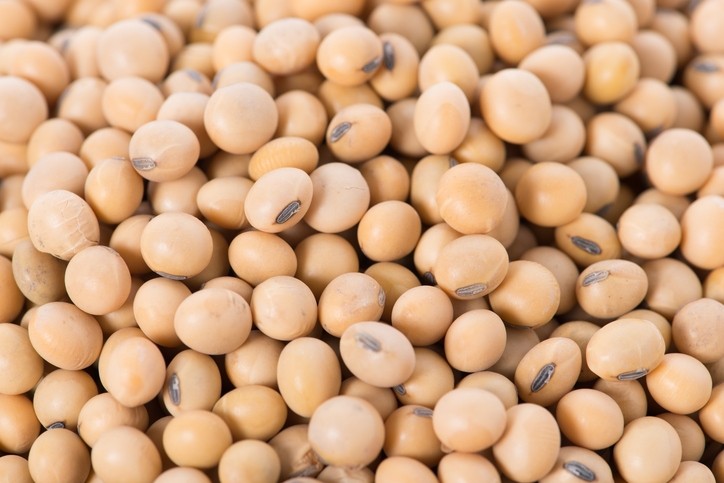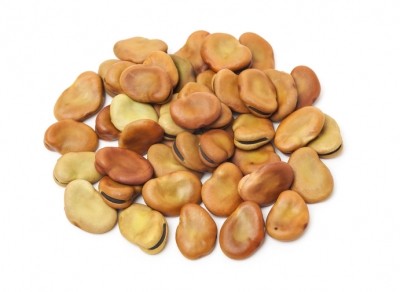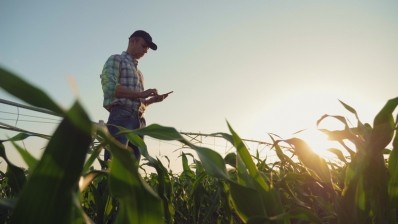Reports from EuroTier 2018
Production of novel feed protein from rapeseed and European grown soybeans – where is it at?

We caught up with him at the Hannover trade show to hear more.
The project deadline of March 2020 is fast approaching. However, he said most of the work on novel protein sources is now entering the final phase, with the majority of the animal studies completed; the team is in the process of analyzing the results of those studies, compiling the findings, and publishing them in papers.
INRA France coordinates Feed-a-Gene. The project involves an international consortium of 23 public and private partners from Europe and China. It got underway in March 2015, with a timeline of five years and a budget of €9m allocated.
It aims to adapt monogastric livestock production systems to improve their overall efficiency and reduce their environmental impact.
The project is looking to develop new and alternative feed resources and feed technologies, to identify and select animals better adapted to fluctuating conditions, and to develop feeding techniques for optimizing the potential of the feed and the animal.
Processing techniques and soy
In terms of alternative protein sources, one of the areas the Feed-a-Gene researchers explored related to the treatment of European grown soybeans to optimize protein quality.
“We wanted to see if we could process the soybeans in a way that we at least have the same quality of protein or better than we get from some of the imported ones. We can see from the experiments that we have been doing with the piglets that we can, depending on how we are processing it, get at least the same and, in some cases, even better quality than that from imported soybean meal.”
The researchers have been using extrusion or flaking technology in the heat treatment part of the process, trying to achieve reduction in the trypsin inhibitors in the protein, he said.
“We can see from the studies we have performed that if we are left with trypsin inhibitors, it has negative impact on the digestibility of the protein and even the growth of the animal.”
The soybean processing experiments were carried out in France and the digestibility studies in Hungary.
Rapeseed research
“We have also been looking at tail-end processing of rapeseed meal. Rapeseed has a hull layer, which, in contrast to soybeans, has a high lignin content and a relatively high protein content, but this protein is badly digested.
“The idea behind the tail-end fractionation was to see whether we could take the rapeseed meal after we have done the oil extraction and then do a fractionation, so that you end up with a fraction where you concentrate more of the germ part of the seed and then have another part that is richer in hulls.
“We can see from the protein and fiber content that we managed to do that [quite effectively].”
Digestibility trials have also been undertaken as part of the rapeseed meal research, he added.
"Recently confirmed trial results confirmed that pigs given the fraction that was concentrated in germ performed better than on the parent rapeseed meal."
Bühler, a partner in Feed-a-Gene, carried out the rapeseed meal processing trials, while the animal feeding trials were conducted at the Institut de Recerca i Tecnologia Agroalimentàries (IRTA), another stakeholder, based in Spain, he said.
Green biomass
The Feed-a-Gene work package also includes research into deriving protein from green biomass like grasses, legumes clovers and alfalfa [Lucerne].
“The reason why we decided to work with green biomass arose from some concerns we had in Denmark, that cereal based cash crops, in some environmentally sensitive areas, can cause leaching of nitrogen to the aquatic environment such as lakes and inlets.
“Therefore, we have been studying the possibilities, over the past few years, in relation to green biomass, to see if we can process the plant, take out the soluble part of the protein, for use in the diets of monogastric animals.
“We have been testing that soluble protein in pigs in the Feed-a-Gene project, and nationally in Denmark, we have been running experiments with it in broiler chickens.
“We are also testing the leftover pulp in ruminants, in feeding trials in Denmark and in rabbits under the Feed-a-Gene project.
“We think the pulp could also be used in highly productive sows in order to avoid stomach ulcers.”
Enzyme technology
In addition to looking at different sources of protein, the researchers have been looking at the development of enzymes, proteases and NSPases, for example, to improve the nutritional value of soybeans and rapeseed. DuPont was the partner on this aspect of the work package.
“The results of trials done haven’t shown that strong an effect of the use of such enzymes in experiments with pigs. We do not have the results of the poultry trials yet but that is in progress.
“We are also looking at the use of upgrading rapeseed with the same kind of technology that is used by Hamlet Protein on soybeans. Preliminary data on studies in relation to this in pig diets were promising.”
The researchers are also investigating NIR technology to determine the chemical composition and nutritional values of feed ingredients and mixed diets.
















